
Infrastructure and defense services provider Parsons (NYSE: PSN) missed Wall Street’s revenue expectations in Q1 CY2025 as sales only rose 1.2% year on year to $1.55 billion. On the other hand, the company’s full-year revenue guidance of $7.25 billion at the midpoint came in 1.3% above analysts’ estimates. Its non-GAAP profit of $0.78 per share was 5.1% above analysts’ consensus estimates.
Is now the time to buy Parsons? Find out by accessing our full research report, it’s free.
Parsons (PSN) Q1 CY2025 Highlights:
- Revenue: $1.55 billion vs analyst estimates of $1.62 billion (1.2% year-on-year growth, 4.2% miss)
- Adjusted EPS: $0.78 vs analyst estimates of $0.74 (5.1% beat)
- Adjusted EBITDA: $148.8 million vs analyst estimates of $142.2 million (9.6% margin, 4.6% beat)
- The company reconfirmed its revenue guidance for the full year of $7.25 billion at the midpoint
- EBITDA guidance for the full year is $675 million at the midpoint, in line with analyst expectations
- Operating Margin: 7%, in line with the same quarter last year
- Free Cash Flow was -$25.26 million compared to -$72.86 million in the same quarter last year
- Backlog: $9.1 billion at quarter end, in line with the same quarter last year
- Market Capitalization: $7.33 billion
“We are pleased with our performance during Q1 as we achieved record first quarter results for total revenue, net income, earnings per share, adjusted EBITDA, adjusted EBITDA margin, and total and funded backlog are at all time highs,” said Carey Smith, chair, president, and chief executive officer.
Company Overview
Delivering aerospace technology during the Cold War-era, Parsons (NYSE: PSN) offers engineering, construction, and cybersecurity solutions for the infrastructure and defense sectors.
Sales Growth
Reviewing a company’s long-term sales performance reveals insights into its quality. Even a bad business can shine for one or two quarters, but a top-tier one grows for years. Thankfully, Parsons’s 11% annualized revenue growth over the last five years was impressive. Its growth beat the average industrials company and shows its offerings resonate with customers, a helpful starting point for our analysis.
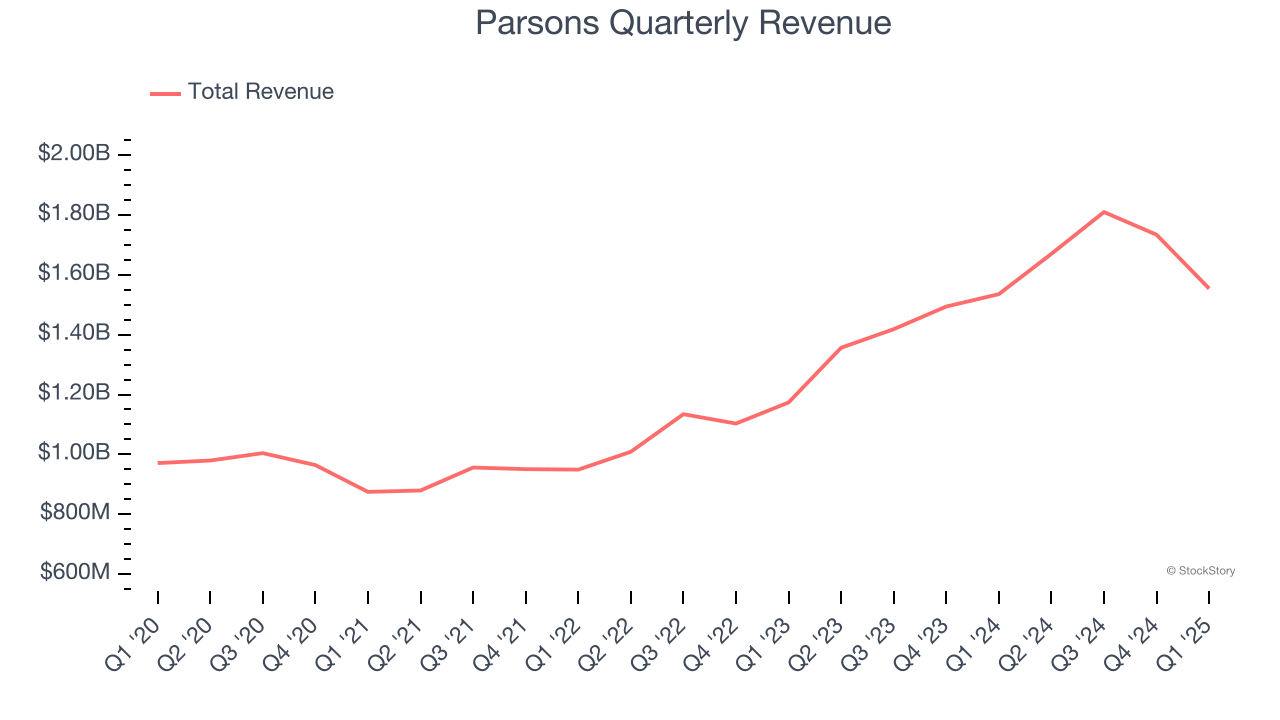
We at StockStory place the most emphasis on long-term growth, but within industrials, a half-decade historical view may miss cycles, industry trends, or a company capitalizing on catalysts such as a new contract win or a successful product line. Parsons’s annualized revenue growth of 23.8% over the last two years is above its five-year trend, suggesting its demand was strong and recently accelerated. 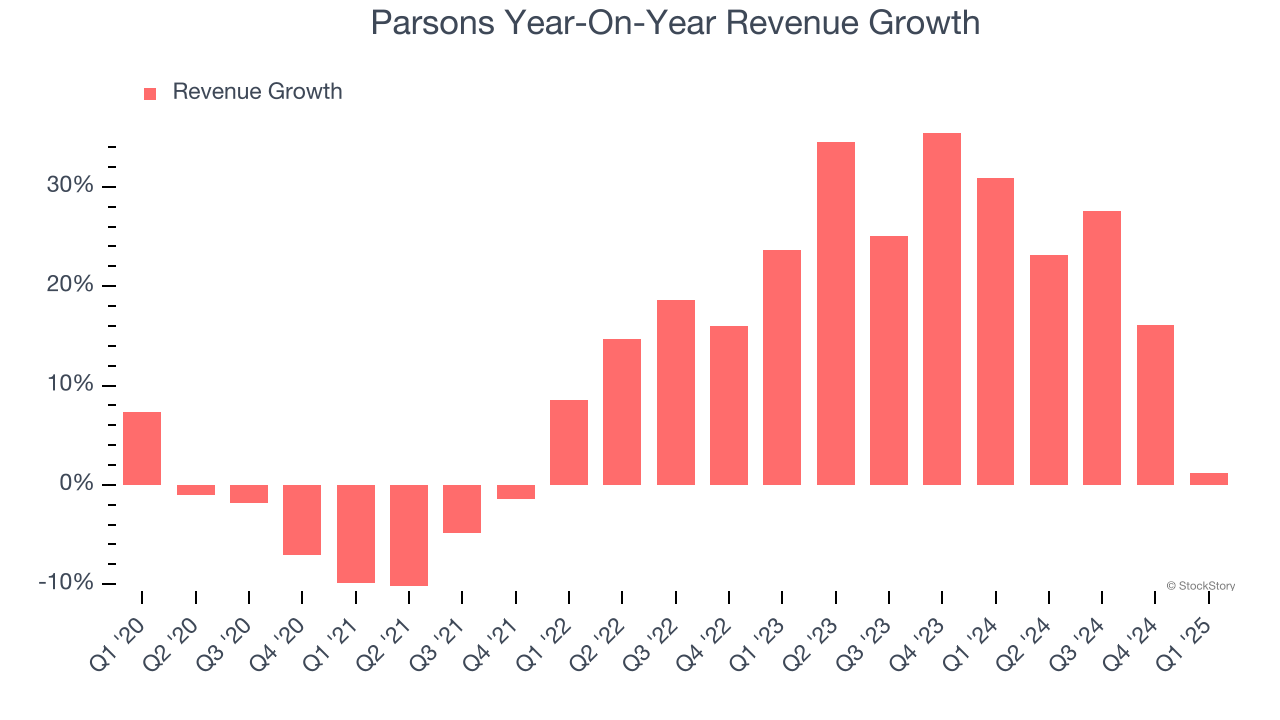
We can dig further into the company’s revenue dynamics by analyzing its backlog, or the value of its outstanding orders that have not yet been executed or delivered. Parsons’s backlog reached $9.1 billion in the latest quarter and averaged 3.9% year-on-year growth over the last two years. Because this number is lower than its revenue growth, we can see the company fulfilled orders at a faster rate than it added new orders to the backlog. This implies Parsons was operating efficiently but raises questions about the health of its sales pipeline. 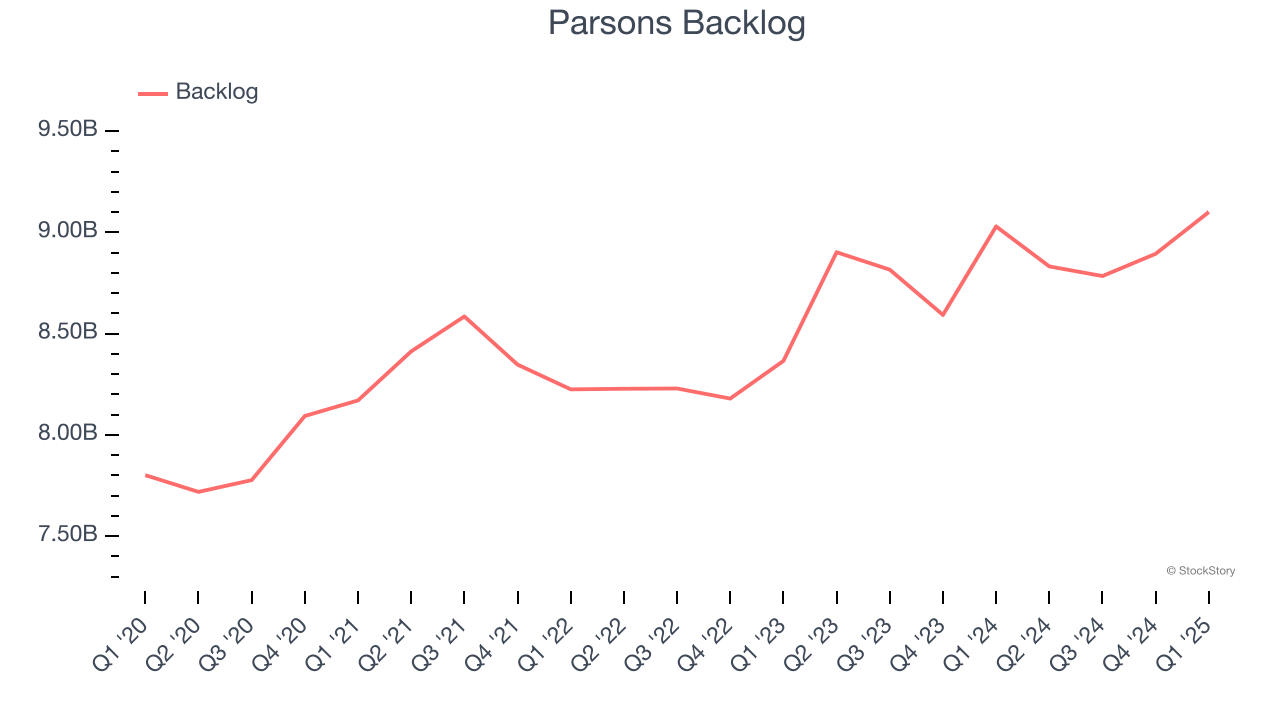
This quarter, Parsons’s revenue grew by 1.2% year on year to $1.55 billion, falling short of Wall Street’s estimates.
Looking ahead, sell-side analysts expect revenue to grow 6.6% over the next 12 months, a deceleration versus the last two years. This projection is underwhelming and implies its products and services will see some demand headwinds. At least the company is tracking well in other measures of financial health.
Software is eating the world and there is virtually no industry left that has been untouched by it. That drives increasing demand for tools helping software developers do their jobs, whether it be monitoring critical cloud infrastructure, integrating audio and video functionality, or ensuring smooth content streaming. Click here to access a free report on our 3 favorite stocks to play this generational megatrend.
Operating Margin
Parsons was profitable over the last five years but held back by its large cost base. Its average operating margin of 5.3% was weak for an industrials business.
On the plus side, Parsons’s operating margin rose by 1.7 percentage points over the last five years, as its sales growth gave it operating leverage.
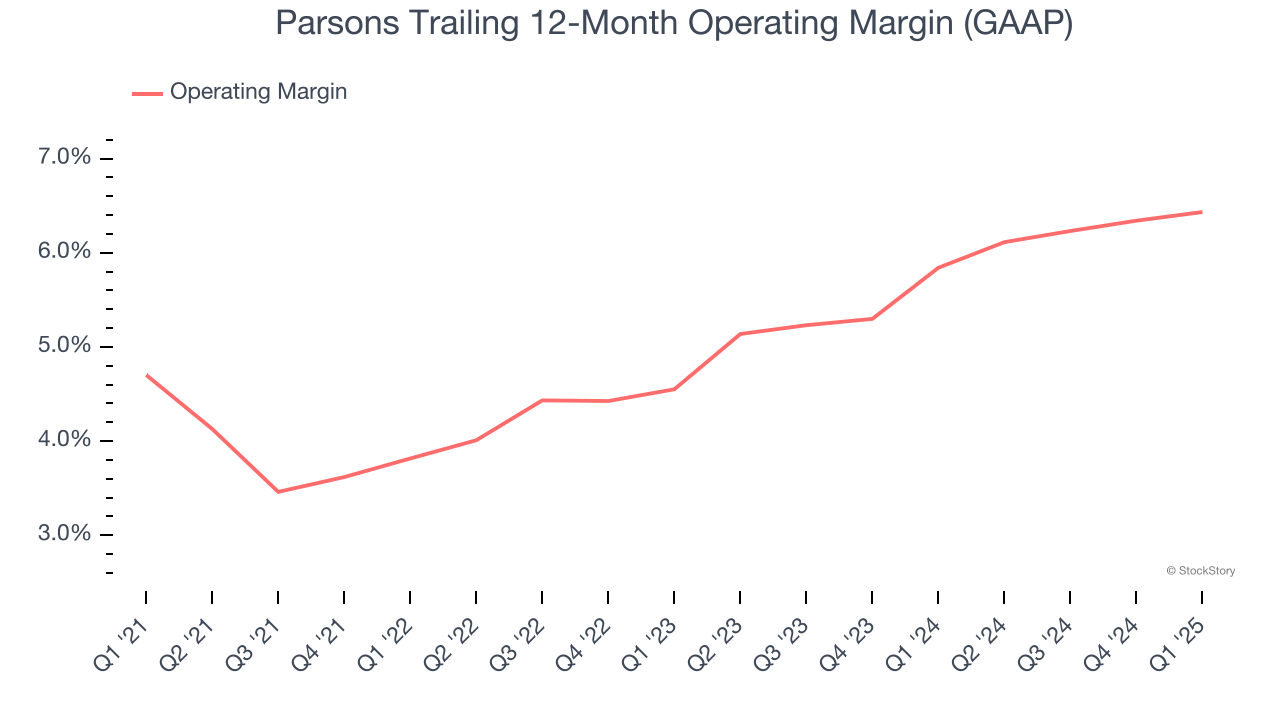
In Q1, Parsons generated an operating profit margin of 7%, in line with the same quarter last year. This indicates the company’s overall cost structure has been relatively stable.
Earnings Per Share
Revenue trends explain a company’s historical growth, but the long-term change in earnings per share (EPS) points to the profitability of that growth – for example, a company could inflate its sales through excessive spending on advertising and promotions.
Parsons’s EPS grew at a remarkable 13.7% compounded annual growth rate over the last five years, higher than its 11% annualized revenue growth. This tells us the company became more profitable on a per-share basis as it expanded.
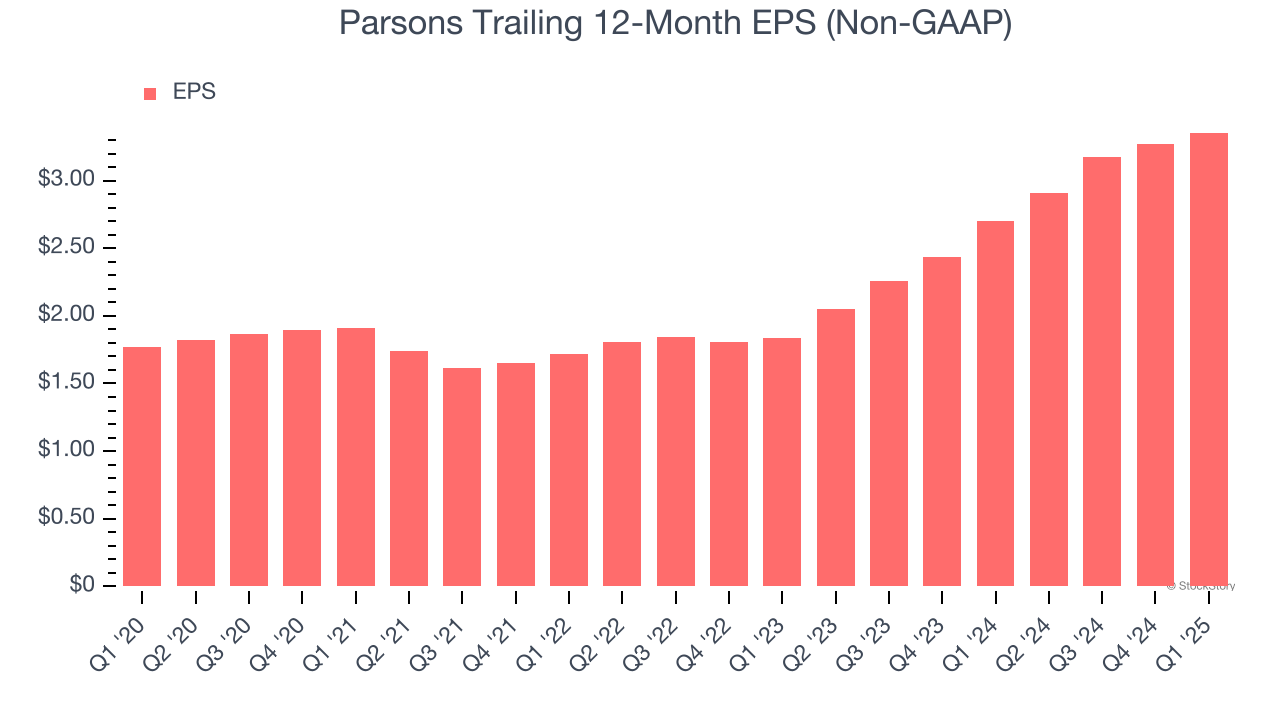
Diving into the nuances of Parsons’s earnings can give us a better understanding of its performance. As we mentioned earlier, Parsons’s operating margin was flat this quarter but expanded by 1.7 percentage points over the last five years. This was the most relevant factor (aside from the revenue impact) behind its higher earnings; taxes and interest expenses can also affect EPS but don’t tell us as much about a company’s fundamentals.
Like with revenue, we analyze EPS over a shorter period to see if we are missing a change in the business.
For Parsons, its two-year annual EPS growth of 35% was higher than its five-year trend. We love it when earnings growth accelerates, especially when it accelerates off an already high base.
In Q1, Parsons reported EPS at $0.78, up from $0.70 in the same quarter last year. This print beat analysts’ estimates by 5.1%. Over the next 12 months, Wall Street expects Parsons’s full-year EPS of $3.35 to grow 12.1%.
Key Takeaways from Parsons’s Q1 Results
We enjoyed seeing Parsons beat analysts’ EBITDA expectations this quarter. We were also glad its full-year revenue guidance slightly exceeded Wall Street’s estimates. On the other hand, its revenue missed significantly and its backlog fell slightly short of Wall Street’s estimates. Zooming out, we think this was a decent quarter featuring some areas of strength but also some blemishes. The stock traded up 2.3% to $70.25 immediately after reporting.
Big picture, is Parsons a buy here and now? We think that the latest quarter is only one piece of the longer-term business quality puzzle. Quality, when combined with valuation, can help determine if the stock is a buy. We cover that in our actionable full research report which you can read here, it’s free.


